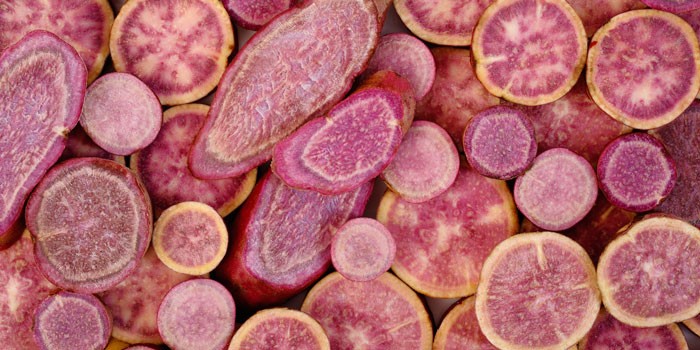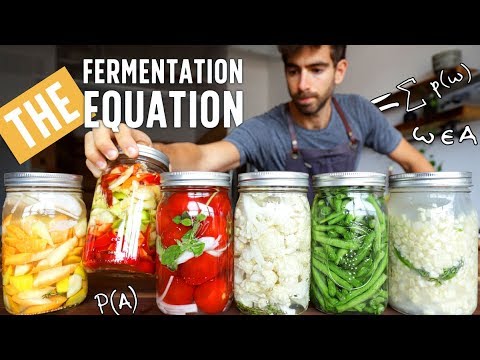@northwoodswis4
Cooking always reduces food value
@steveb4
Yes seaberries are extremely healthy but they are high in different vitamins
https://growingfruit.org/t/lets-talk-about-nutrition-and-health-vegetables-fruits/26883
This article explains it slightly. Purple colored foods are anthocyanins
"
What are anthocyanins and why are purple foods so healthy?
By
At BBC Good Food we believe eating a balanced and varied diet, including at least five portions of fruit and vegetables per day, is best for health. But what’s so special about purple foods in particular?
Many purple foods contain anthocyanins
All brightly coloured fruit and vegetables contain antioxidants – compounds which play a key role in protecting our bodies – but many naturally purple-coloured foods contain a certain antioxidant called anthocyanin. These are beneficial plant pigments which give fruit and veg their deep red, purple or blue hues.
While studies are ongoing, it’s too early to say conclusively whether purple foods containing anthocyanins deserve to be lauded as ‘superfoods’ as they have been in some media reports. Previous research has linked anthocyanins to a wide variety of health claims, however, including increased longevity, cardiovascular health, cancer prevention and dementia.
Which foods contain anthocyanins?
Anthocyanins are found in high concentrations in blackcurrants, blackberries and blueberries, as well as in aubergine (in the skin), red cabbage, cranberries and cherries.
Blueberries
Blueberries are a useful source of vitamin C, which helps protect cells and aids the absorption of iron, and contain soluble fibre, which is beneficial to the digestive system. Read more about the health benefits of blueberries.
A study in the European Journal of Nutrition found that a supplement containing dried blueberry powder improved brain power in children aged 7 to 10.
Research from Tufts University suggests that consuming a blueberry supplement may be effective in improving or delaying short-term memory loss in rats.
However, the NHS points out that the existing studies into how blueberries might prevent cancer or improve memory have so far relied on small sample groups or animals, and it is not yet clear whether these findings will translate to larger groups of the human population. Read more from the NHS about the nutritional benefits of blueberries.
Pomegranate
Somewhere between red and purple, the jewel-like colour of pomegranate is a consequence of its anthocyanin content. Pomegranate is a good source of fibre, and also provides vitamins A, C and E, iron, and other antioxidants such as tannins.
One study found that pomegranate helped to strengthen bones and prevent osteoporosis in mice through decreased inflammation and oxidative stress.
Another study found that consuming 50ml of pomegranate juice per day reduced damage to arteries and cut cholesterol build-up in people with narrowed arteries.
A further study found that a daily glass of pomegranate juice improved blood flow to the heart, resulting in a lower risk of heart attack. However, the NHS points out that as it was a very limited trial these positive results could have been down to chance.
Purple sweet potato
Purple sweet potatoes have recently been in the media spotlight. They are commonly eaten on the Japanese island of Okinawa, which is home to an exceptionally healthy elderly population – with a large number over the age of 100, and rates of dementia reported to be up to 50% lower than in the West. Some scientists think that the large quantities of purple sweet potato in their diet plays a key role in keeping their bodies and brains healthy well into old age. However, to date, there are not many studies into the health benefits of the purple sweet potato, and it’s impossible to say that the Okinawan’s longevity is down to this one food alone.
A note on beetroot
Beetroot’s deep purple colour comes from plant chemicals called betalains. Like anthocyanins, betalains have antioxidant and anti-inflammatory properties. You can also find betalains in the stems of chard and rhubarb but it’s the flesh and skin of beetroots which are especially rich in them.
Beetroot is also a good source of vitamins and minerals, including folate, iron, manganese and potassium. They’re also nitrate-rich, which contributes to many of beetroot’s perceived health benefits. For example, a study from 2013 found that consuming beetroot juice was linked with lower blood pressure.
Beetroot juice has also been found to moderately improve athletic performance.
Another study has suggested that a diet that includes beetroot juice may increase blood flow to the brain, which some have interpreted to mean it may help prevent or improve dementia. However, these findings are limited by the fact that it was based on a very small sample size of 16 elderly people over an extremely short interval. This means that much more evidence is needed before we can conclusively say that beetroot juice aids cognitive function.
So should we be eating more purple foods?
There’s no doubt that naturally purple-coloured fruit and vegetables are an excellent addition to a varied diet, but it’s also important to remember that balance is key along with including a rainbow of differently coloured fruits and vegetables for optimum health benefits.
"











